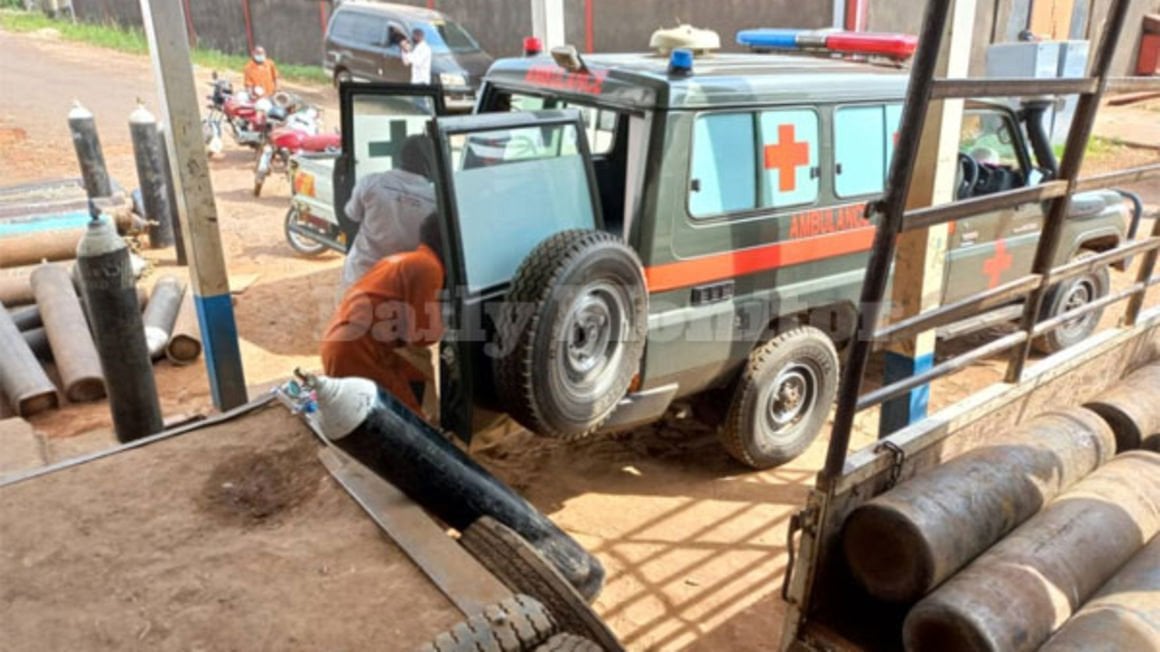Oxygen gas cylinders are tax exempt, says URA

People load oxygen cylinders for Covid-19 patients onto an ambulance at Oxygas Oxygen plant in Kyambogo, Kampala on June 16, 2021. PHOTO/STEPHEN OTAGE
What you need to know:
- Shortage of oxygen has been cited by hospitals as a major reason for the less-than-satisfactory services to critically-ill Covid patients, many of who die due to inadequate oxygen.
- Officials said a Covid patient takes anywhere between 20 to 70 litres of oxygen per day, depending on whether the condition is mild, severe or critical, giving an average oxygen consumption of 45 litres per patient.
As Uganda struggles with challenges of shortage of oxygen supplies for Covid-19 patients amid surging cases of the virus, Uganda Revenue Authority Tuesday said oxygen gas cylinders are exempted from all taxes.
According to URA, the oxygen gas cylinders are considered an essential tool used in diagnosis, prevention, treatment and management of the Covid-19 pandemic following the amendment of East Africa n Community Customs Management Act.
According to URA the Legal Notice No. EAC/89/2020 dated June 30, 2020 amended the 5th schedule of the Act, Item 20, to cater for Covid-19 supplies.
"More specifically, item 20 Part B: General Exemptions, item ii-1 (e), of the 5th schedule that was redesigned to read as follows; "Any supplies for diagnosis, prevention, treatment and management of epidemics, pandemics and health hazards as recommended by the competent authority in the ministry responsible for health."
Shortage of oxygen has been cited by hospitals as a major reason for the less-than-satisfactory services to critically-ill Covid patients, many of who die due to inadequate oxygen.
Officials said a Covid patient takes anywhere between 20 to 70 litres of oxygen per day, depending on whether the condition is mild, severe or critical, giving an average oxygen consumption of 45 litres per patient.
A recent Daily Monitor mini-survey showed that Tembo Steel, the biggest producer of oxygen in the country, makes up to 18 million litres of oxygen at their Lugazi and Iganga oxygen plants a day.
The other producers are Oxygas, which manufactures 4.8 million litres per day; Uganda Oxygen Limited, which makes 2.4 million litres a day; and, Roofings, which produces up to 2.5 million litres every 24 hours. These total 27.7 million litres.
Mulago produces 2,999 litres of oxygen per hour or 4.3 million litres per day, according to its executive director, Dr Baterana Byarugaba.
A Ministry of Health source said each Regional Referral Hospital (RRH), if operating at full capacity, can make 15,000 litres of oxygen per hour or 360,000 litres per day, translating to 5 million litres of oxygen for the 14 regional referral hospitals combined.
This means oxygen plants in public health facilities generate around 9.3 million litres of oxygen per day, leaving a deficit of 24.5 million litres.
President Museveni had said he imposed the first lockdown in March last year to enable the country prepare for the worst scenario of the pandemic which at the time appeared to spare Uganda while battering more developed countries. It remains unclear why the government did not prioritise boosting oxygen production capacity after learning from other jurisdictions that the gas was essential for the survival of critically-ill Covid patients.
Mr Rajesh Kumar, the Oxygas Limited executive director, admitted that although they are producing oxygen 24 hours a day, they are still failing to meet the demand.
“During the first wave of Covid-19 pandemic, we could meet 100 per cent of supply demand. But during this second wave, we are failing to meet the demand of many hospitals. So many hospitals are now treating Covid-19,” he said.





